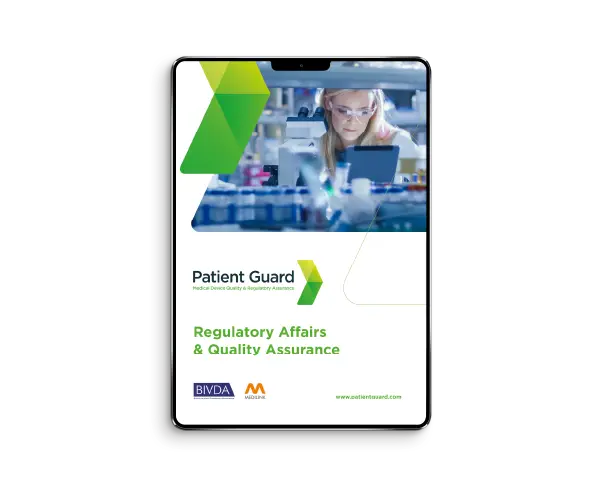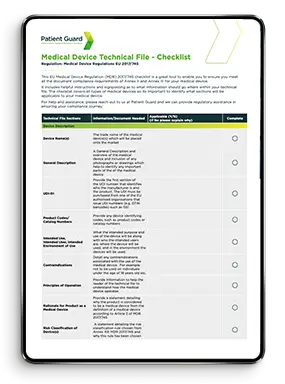Post-Market Clinical Follow-Up for Medical Devices: Ensuring Safety, Performance, and Compliance
Post-market clinical follow-up (PMCF) plays a crucial role in ensuring the ongoing safety, performance, and compliance of medical devices after they have been placed on the market. This process involves monitoring, collecting data, and assessing the real-world performance of medical devices to identify any potential risks or issues that may not have been apparent during pre-market clinical trials. As regulatory requirements evolve, manufacturers are required to implement robust PMCF strategies to maintain product approval, protect patients, and meet regulatory standards.
In this blog post, we’ll explore the importance of PMCF for medical devices, key components of an effective PMCF plan, and how manufacturers can ensure compliance with regulations.
What is Post-Market Clinical Follow-Up?
Post-market clinical follow-up is a continuous process designed to gather additional data on a medical device’s performance once it has been introduced to the market. The goal is to identify any potential risks, unexpected side effects, or degradation of the device’s efficacy over time. This information helps manufacturers refine their products, update instructions for use, and mitigate any adverse events that could affect patient safety.
While pre-market clinical trials help assess a device’s safety and performance in a controlled environment, PMCF ensures the device performs as expected in the real world, where patient conditions, user behavior, and environmental factors may vary.

Why is PMCF Important?
PMCF is essential for several reasons, including:
- Patient Safety: It helps detect any adverse effects that may emerge over time, especially when a device is used by a larger and more diverse population than in clinical trials.
- Regulatory Compliance: Medical device manufacturers must comply with stringent regulations such as the European Union Medical Device Regulation (MDR) and the U.S. Food and Drug Administration (FDA) guidelines. PMCF is a mandatory process under these regulations.
- Device Performance Monitoring: It allows manufacturers to monitor long-term performance and evaluate if the device continues to meet its intended purpose.
- Market Surveillance: PMCF provides valuable insights into how the device is being used in the real world, contributing to better device design and more accurate labeling.
- Post-Market Risk Management: PMCF plays a key role in risk management by identifying and mitigating potential risks that could compromise patient safety.
Key Elements of an Effective PMCF Plan
An effective PMCF plan requires a structured and systematic approach to data collection and analysis. Here are the key components of a successful plan:
1. Post-Market Data Collection
The first step in PMCF is collecting data from clinical users and patients. This can be done through various methods, such as:
- Clinical studies: Additional clinical trials may be required to monitor device performance over a more extended period.
- Surveys and feedback: Gathering feedback from healthcare providers and patients through surveys or interviews can provide valuable insights.
- Device registries: Device-specific registries allow manufacturers to collect data on long-term safety and performance.
2. Data Analysis and Reporting
Once data is collected, it must be analyzed for trends and potential risks. The analysis should look for any unanticipated adverse events, complications, or failures that may arise. Regular reporting to regulatory authorities ensures that manufacturers comply with their obligations.
3. Risk Assessment and Mitigation
PMCF data helps in assessing whether existing risk management strategies need to be updated. If new risks are identified, manufacturers must take corrective actions, which may include:
- Updating device labeling.
- Modifying instructions for use.
- Conducting further studies or trials.
4. Regulatory Reporting
Manufacturers must report any adverse events or significant findings to relevant authorities, such as the FDA or European Medicines Agency (EMA). Failure to do so can result in non-compliance and legal consequences.
5. Periodic Review and Adjustment
The PMCF process is not a one-time event. Manufacturers must continuously review data, reassess risks, and update their PMCF strategy based on the latest findings. This ongoing review helps ensure that the device remains safe and effective throughout its lifecycle.
How PMCF Enhances Device Lifecycle Management
PMCF plays an integral role in the lifecycle management of medical devices. It doesn’t end when the device is launched; rather, it becomes an ongoing process that helps manufacturers keep devices up-to-date, safe, and compliant with evolving regulations.
By continuously collecting and analyzing data, manufacturers can:
- Improve the design of the device.
- Ensure its long-term safety and performance.
- Enhance customer satisfaction by addressing issues before they become widespread.
- Maintain market access by meeting regulatory requirements.

Regulatory Requirements for Post-Market Clinical Follow-Up
Regulations such as the EU Medical Device Regulation (MDR) and In-vitro Diagnostic Regulation (IVDR) emphasize the importance of PMCF for all devices placed on the market in Europe. According to these regulations, manufacturers must have a comprehensive PMCF plan in place that includes risk management, data collection, and reporting mechanisms.
In the U.S., the FDA also requires ongoing post-market surveillance for certain devices, particularly Class III (high-risk) devices. This includes submitting adverse event reports and conducting further studies if necessary.
Best Practices for Successful PMCF
To ensure the success of PMCF, manufacturers should follow these best practices:
- Develop a Clear PMCF Plan: Outline the methods, timelines, and data sources for PMCF.
- Engage Healthcare Providers and Patients: Actively involve healthcare providers and patients in providing real-world feedback on device performance.
- Adopt Advanced Data Management Tools: Use software and systems that can manage large volumes of post-market data efficiently.
- Maintain Compliance with Regulations: Stay updated on changes to regulations and ensure your PMCF plan meets all necessary requirements.
- Continuously Monitor Device Performance: Regularly review the performance of devices in the market and make necessary improvements based on data analysis.
Conclusion
Post-market clinical follow-up is a critical part of the medical device lifecycle, ensuring that products remain safe and effective after reaching the market. By developing a robust PMCF plan, manufacturers can address any emerging issues, comply with regulatory requirements, and ultimately improve patient outcomes. As the landscape of medical device regulations continues to evolve, a well-executed PMCF strategy will be vital for maintaining a strong reputation and safeguarding public health.
By taking proactive steps to monitor devices post-market, manufacturers can minimize risks, maximize patient safety, and stay ahead in a competitive and highly regulated industry.
How can Patient Guard Help?
Patient Guard offers valuable support to customers with Post-Market Clinical Follow-Up (PMCF) by providing tailored solutions to ensure ongoing monitoring and evaluation of medical devices in real-world settings. Our expertise includes producing PMCF plans, designing clinical surveys, analysing patient data to assess device performance and safety over time. Patient Guard helps manufacturers comply with regulatory requirements. By leveraging our tools and knowledge, customers can enhance their post-market surveillance efforts, address emerging issues promptly, and make informed decisions for continuous device improvement.
FAQs
Post-Market Clinical Follow-Up (PMCF) refers to the ongoing process of monitoring and evaluating the performance and safety of a medical device after it has been released into the market. This involves collecting clinical data, feedback from users, and real-world evidence to ensure that the device continues to meet its intended purposes and does not pose unforeseen risks. PMCF activities may include clinical studies, surveys, and adverse event reporting.
PMCF is essential because it helps to identify potential long-term risks or unanticipated complications that may not have been apparent during clinical trials before the device was launched. It ensures that the device remains safe, effective, and compliant with regulatory standards over its lifecycle. Additionally, PMCF supports the continual improvement of the device based on real-world data, providing manufacturers with valuable insights for design modifications or updates to user instructions.
Key activities in PMCF include:
- Post-market surveillance (PMS): Systematic collection of data from clinical settings to track adverse events and device performance.
- Clinical studies: Conducting additional trials or registries to gather real-world clinical data.
- User feedback: Collecting information from healthcare professionals and patients regarding their experiences with the device.
- Data analysis: Analyzing the collected data to identify trends, potential issues, and areas for improvement.
- Risk management updates: Using findings from PMCF to refine risk assessments, and if necessary, implement corrective actions.
The manufacturer of the medical device is primarily responsible for conducting PMCF. They must establish a plan for post-market monitoring, implement the necessary studies, and ensure ongoing data collection and analysis. Regulatory authorities, such as the FDA (U.S.) or the European Medicines Agency (EMA), may also require manufacturers to submit reports or provide evidence that they are following proper PMCF procedures. In some cases, third-party organizations or clinical research entities may assist in conducting PMCF activities, but the manufacturer remains accountable for compliance.



